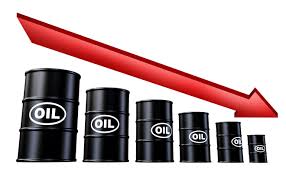 Oil prices slumped on Thursday morning, snapping a three-day period of gains after San Francisco Federal Reserve President Mary Daly commented that while the U.S. economy has strong momentum, uncertainty and the global growth slowdown are impacting the U.S. economy to the downside. Daly made her comments in New Zealand and said that she would “watch and see” before committing to another U.S. interest rate cut.
Oil prices slumped on Thursday morning, snapping a three-day period of gains after San Francisco Federal Reserve President Mary Daly commented that while the U.S. economy has strong momentum, uncertainty and the global growth slowdown are impacting the U.S. economy to the downside. Daly made her comments in New Zealand and said that she would “watch and see” before committing to another U.S. interest rate cut.
U.S. WTI futures were down 0.32 percent as of 1:30 p.m. HK/SIN, to $55.60 per barrel. U.S. WTI prices are down nearly 20 percent in the past 12 months. Brent crude futures were 0.56 percent lower to $60.15 per barrel.
According to the U.S. Energy Information Administration, U.S. oil inventories fell last week by 10 million barrels, surpassing analyst expectations for a 2.1 million-barrel drop. U.S. gasoline inventories dropped by 2.1 million barrels. Expectations were for a 388,000-barrel decline.
On Wednesday, Morgan Stanley lowered its price forecast for the rest of the year on concerns from the weaker economic outlook and the trade war between the U.S. and China which is likely to decrease demand. The bank put its 2019 U.S. WTI forecast for Q3 and Q4 2019 at $55 per barrel, down from $58 per barrel. It cut its Brent forecast from $65 per barrel to $60 per barrel. It also slashed its 2019 demand growth outlook by 20 percent, cutting it to 800,000 barrels per day from the original forecast of 1 million barrels per day.
According to one Bloomberg analyst, the falling oil prices negate other alarms that signal an upcoming U.S. recession, including the inverted yield curves that have had traders confused and sometimes panicked in recent days. Robert Burgess commented that historically, every economic downturn since 1970 saw oil prices double in the 12 months preceding the downturn. At the moment, with oil prices significantly lower than they have been in nearly two years, Burges questions whether a recession is, in fact, on the horizon.
